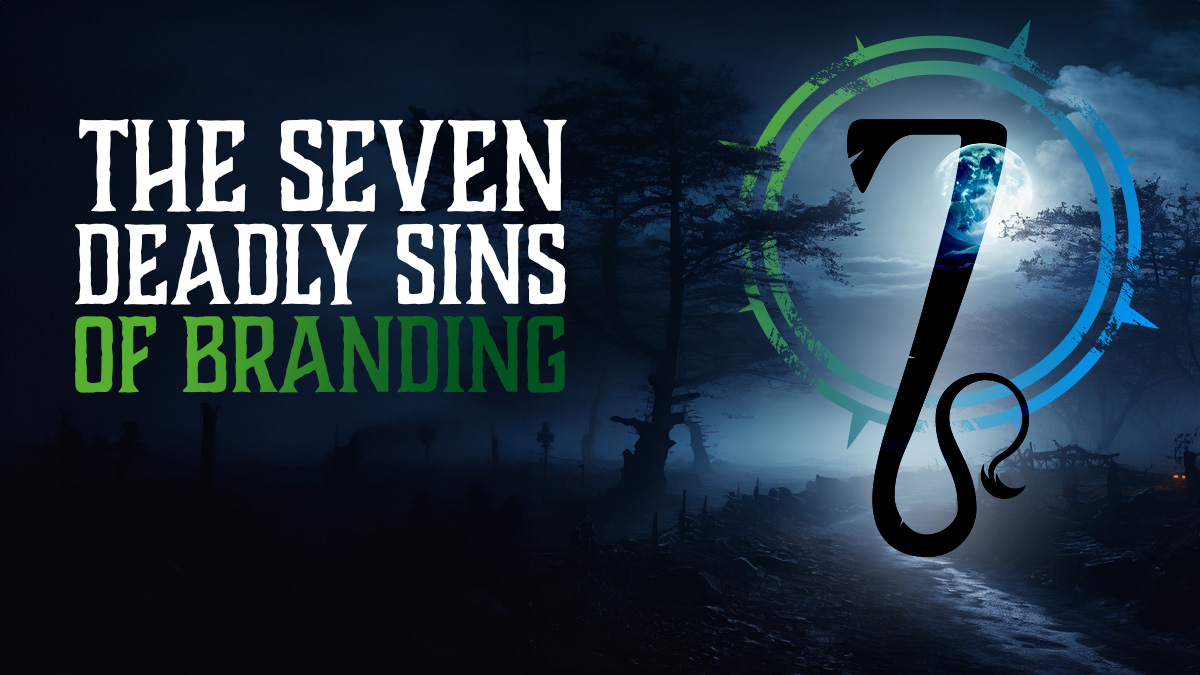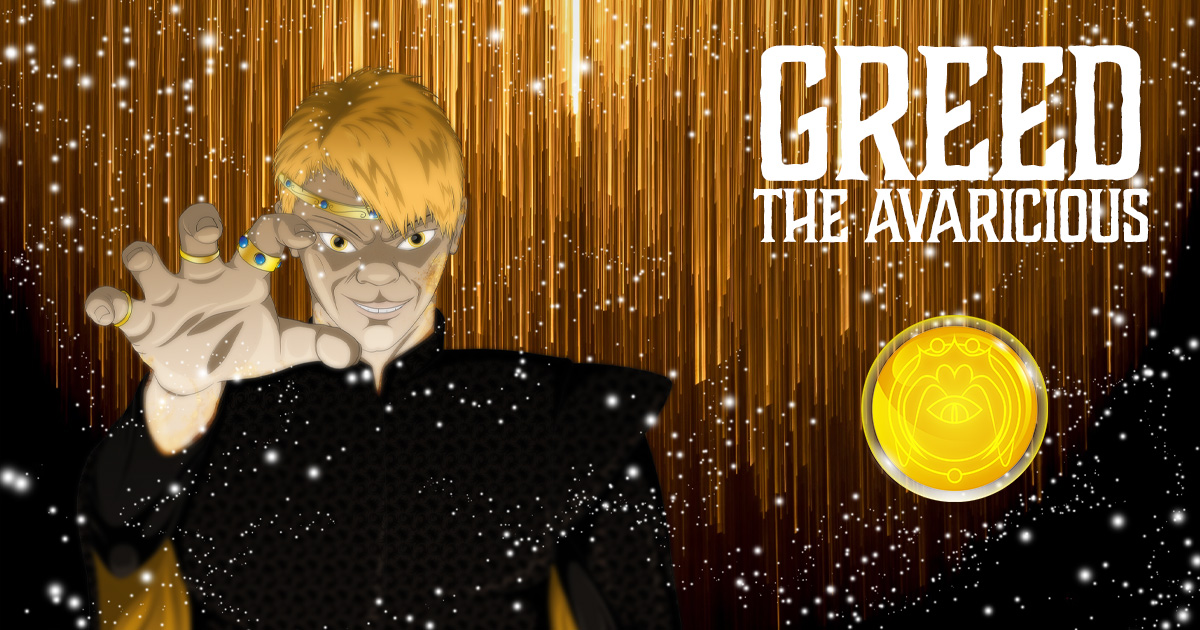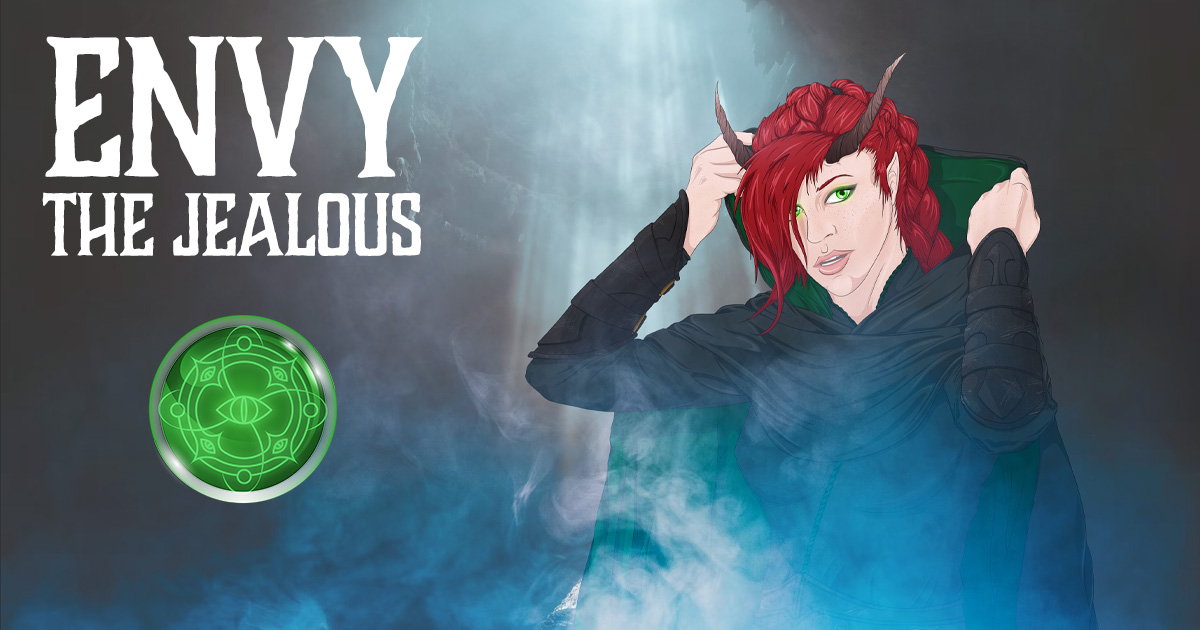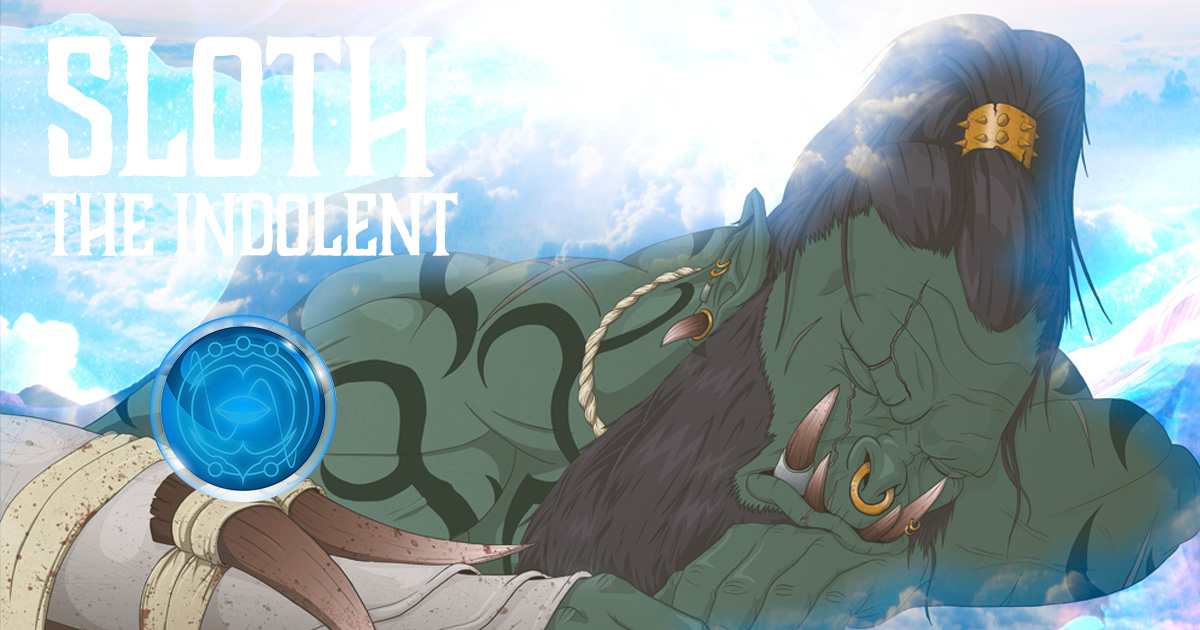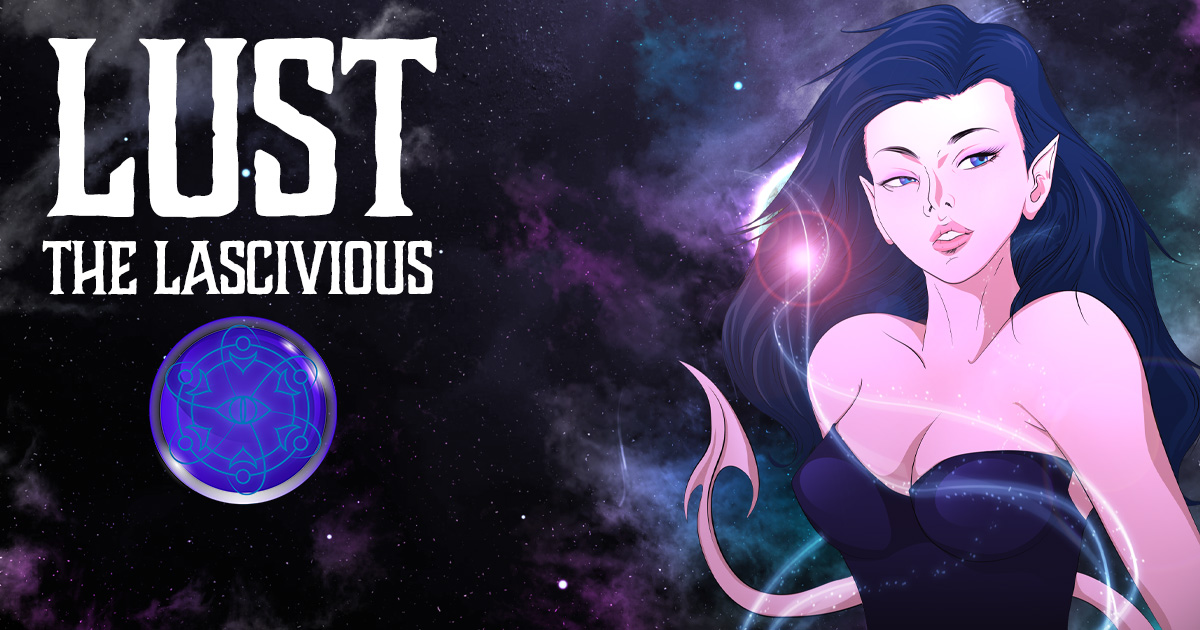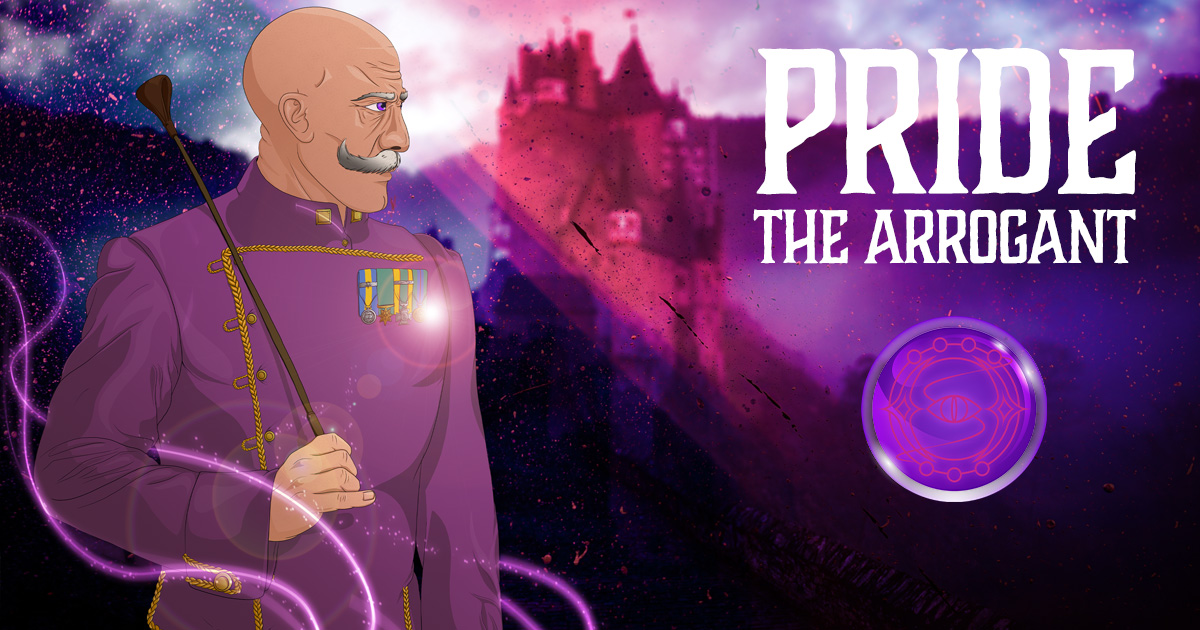What are the Seven Deadly Sins of Branding?
There is something insidious eroding your brand authority and image – the Seven Deadly Sins of Branding. As your brand is a collection of thoughts and feelings associated with your business, any damage to this creates negative impressions.
Brand identity and authority are crucial to your success in business – regardless of its size. For small business owners, it can be even more vital as they lack the resources of larger competitors. Differentiation, credibility, loyalty and perceived value are all affected by your identity and authority.
And the Seven Deadly Sins of Branding can cause havoc – destroying all your hard work.
Wrath. Gluttony. Greed. Envy. Sloth. Lust. Pride.
Letting these creep into your branding damages your authority and image.
Here are the signs to look out for – and what to do if they appear.

Wrath – the Furious
What is Brand Wrath?
Wrath is a brand that responds poorly to criticism and finds it hard to take advice. This can scare clients away even before getting in touch, leading to further frustration.
It’s not uncommon for a business owner to get angry with their brand at one point or another. While it may not be an obvious flaw, impatience, defensiveness, and thoughtless changes can have detrimental effects on your brand’s perception, customer loyalty, and overall success.
The danger is that this can seep into the brand itself, feeding changes that aren’t fully thought through.
And I get it. Keeping a brand going is hard work and it’s easy to feel frustrated or impatient when it isn’t going quite how you’d like it to.
Wrath comes from a place of passion – which is great! But untempered, it can cause problems for your brand:
- Impatience leads to hasty decision-making and the desire for immediate results, causing you to overlook critical aspects of brand development and customer relationships. It’s vital to comprehend the long-term consequences of impulsive behaviour.
- Defensiveness, on the other hand, isolates potential customers and prevents meaningful interactions, hindering your ability to adapt and grow in an ever-evolving market.
- Ill-thought-out changes create inconsistency and confusion, eroding trust and diluting your brand’s message.
The Virtue of Patience
The best cure for wrath, is somewhat unsurprisingly, patience. Here are a few things to think about that will help cure your brand of Wrath:
- Gaining a greater understanding of your audience’s deeper needs helps you communicate better and craft a message that is more attractive to them.
- Taking time to know how your audience feels is also a great way to improve your interactions with them. A brand that responds to its audience with empathy is more likely to build stronger connections – and improve sales.
- Don’t change things on a whim! Think more strategically and give changes time to set in. Consistency will create more opportunities as you build a measure of trust before interacting directly with customers.
Gluttony – the Voracious
What is Brand Gluttony?
Sometimes, a brand bites off more than it can chew. It’s not uncommon – business owners generally want growth, so taking what comes their way seems natural. While it doesn’t sound awful, left unchecked it can lead to a brand that loses its niche, through becoming oversaturated or even out of control.
When Gluttony seeps into a brand, it loses the identity that made it unique, becoming fat on its success and ultimately, bland.
It’s easy to get complacent, creating a confusing message that ultimately leaves your ideal clients tired and turned away. This can be a killer for brands.
Gluttony comes from a place of wanting growth – which is great! But left unchecked, it can cause problems for your brand:
- An over-saturated brand identity leads to confusion in the target market – is this for them, or is it not? This confusion pushes away your target market.
- A history of taking on ‘whoever comes along’ creates a lack of a clear niche – this can cap growth and leave the brand looking anything but expert.
- A lack of self-control pushes the brand into a position where it no longer knows its own identity
The Virtue of Temperance
The best cure for Gluttony is temperance – or self-restraint! Here are a few things to think about that will help cure your brand of Gluttony:
- Audit your brand and slim down on parts that are not effective. Organise your messaging to a few key points and work around a single, strong emotion for your audience to feel.
- Take a ‘less is more’ approach to your branding. Rather than adding more and more to the visual identity, dial it back to a few key components to avoid overstimulation.
- Go back to basics with your niche. Understand who it is you REALLY want to work with and what makes them special to your brand. Begin dropping what doesn’t fit this niche and focus on what does.
Greed – the Avaricious
What is Brand Greed?
Greed is the brand that wants it all NOW and is always chasing the next best thing. It’s not all wealth and riches – a lot of business owners lose sight of their brand’s purpose. While money is important to business, seeing it as the single function of your brand is a surefire way to leave unfulfilled and unhappy clients in your wake.
When Greed permeates your brand, it stops being about what you can do for your clients and becomes about what you can get out of them.
And I get it. It’s a tricky time for business, with rising costs and tighter budgets. But focusing on yourself and not what problems you’re solving can create a brand that has bland, untargeted messaging and sees everything as a threat.
Greed comes from a place of wanting to succeed – which! But blind you to the needs of your clients, causing problems for your brand:
- The loss of a distinct niche leads to a brand that has no clear identity. As it looks to get more and more clients, it loses what made it special and forces bland, untargeted messaging.
- A hyper-competitive stance leads to a negative image in the industry as the brand perceives threats all around it. This can put potential partners off working with the brand and prevent opportunities for collaborative efforts.
- A need for immediate satisfaction pushes the brand to continually attempt to encompass as many clients as possible – whether they’re a good fit or not. This will leave clients unfulfilled and lead to negative brand equity.
The Virtue of Charity
The best cure for Greed, is somewhat unsurprisingly, charity. Here are a few things to think about that will help cure your brand of Greed:
- Find the ‘why’ for the business – why do you exist and what problems do you solve? Yes, a business needs to make money, but building a purpose beyond that will create a more unique, focused brand.
- Turn the central desire of the brand from self-serving motives to solving a problem for your perfect client. Placing the customer at the centre of your brand will help keep them engaged.
- Give something back! Allying your brand with charities and building a more purpose-led brand creates a following that is more likely to be loyal and engaged.
Envy – the Jealous
What is Brand Wrath?
Envy is the brand that spends too long looking at the competition – and as such finds it hard to settle on a clear identity.
Being aware of your competition is an important part of doing business. But spending too much time looking at where they’re going and not where you are can cause problems for your brand.
When Envy enters a brand, it begins to lose its own identity and becomes a facsimile of its competition. Without its clear mission and purpose, it ambles through life and never fulfils its potential.
Sometimes it’s easy to focus on what you don’t have, rather than what you do. This can cause small brands to stumble before they’ve had a chance to show what they’re truly made of.
Envy comes from a place of awareness. But left unchecked, it can cause problems for your brand:
- Amnesia – Envious brands often forget important aspects of their identity, like their mission and purpose. This can make clients feel unengaged and lose interest.
- Coveting what the competition has means the brand tries to replicate what it sees as success – often building a doppelganger brand that has no point of difference.
- Paranoia means the brand is constantly looking over its shoulder – second-guessing decisions creates a brand that finds it hard to grow and fulfil its potential.
The Virtue of Gratitude
The best cure for Envy is gratitude – understanding and being thankful for what it has! Here are a few things to think about that will help cure your brand of Envy:
- Gather and read your client testimonials. These are great sources for why your clients choose to work with you over your competition.
- Refocus the brand on who matters. Taking your brand identity and gearing it towards a niche that wants what you’re offering, and others can’t, is a great way to build better relationships with your audience.
- Take time to focus on what makes your brand different. If you can rediscover your purpose and then show it in your brand identity, you’ll attract better clients and stand out as more unique in your market.
Sloth – the Indolent
What is Brand Sloth?
Sloth is a brand that takes an ‘it’ll do’ attitude towards itself. Success is the aim of most brands – but it’s not something that you can safely ignore once you reach it. Rest is important in anything you do, but your brand can get complacent if you’re not careful.
When Sloth seeps into a brand, its identity gradually becomes more and more out of date. Taking its position in the market for granted, it handwaves away the need for further strategy and lets its identity dissipate and become forgotten. Or worse, it sleepwalks directly into a major crisis.
When the brand gets lazy, cracks start to appear. This causes brands’ growth to stagnate.
Sloth comes from a place of having reached your goals and being uncertain of where to go next. Left unchecked, it can cause problems for your brand:
- An ‘It’ll do’ attitude to branding means the identity loses what made it special in the first place. Over time and unchecked, this leaves the brand with a message that no longer reflects the business.
- A reactive strategy slows growth and causes the brand to slowly derail. This can cause problems for the brand down the line as it steadily goes out of control.
- The lack of a clear plan prevents further brand growth, leading to stagnation and eventually, decline.
The Virtue of Diligence
The best cure for Sloth is diligence – becoming more aware of the brand’s surroundings and proactively planning. Here are a few things to think about that will help cure your brand of Sloth:
- Become more aware of what is going on in the market. Over time, perceptions shift and change, so taking a longer view of how these changes will affect your brand can help you get ahead of them.
- Show a willingness to evolve. Slothful brands can sometimes become the victim of their success, arrogantly believing themselves untouchable until a newer and sleeker competitor suddenly whisks away their clients. Being able to evolve and change with the times keeps your brand ahead.
- Create plans for your brand – and find a way to be held accountable. Sloth can creep back in, so accountability can help you stay vigilant.
Lust – the Lascivious
What is Brand Lust?
Lust is the brand that will do anything; no matter the cost.
Doing whatever it takes – no matter the cost – is a cost in itself. This flaw can be more subtle than others but is no less dangerous – leaving the brand in a position where it fails to appreciate what it already has.
When this seeps into the brand itself, it creates feelings of unease and confusion as to where its desire truly lies.
And I get it. New things are exciting! However, chasing whims can lead to a lack of connection with your clients.
Lust comes from wanting connection – not a bad thing in itself. But unfiltered, it can cause problems for your brand:
- A lack of foresight creates a brand that is constantly chasing the ‘new thing’. This means that any connection with its audience becomes shallow – a true, deep connection that builds a loyal base eludes it.
- A set of mismatched values means it struggles to explain its true desire. This brand confusion feeds into a brand message that seems to attract the wrong clients for the brand.
- Confusion becomes the main issue, constantly implementing impulsive changes and never being able to create the deep connections it needs.
The Virtue of Purity
The best cure for Lust is purity – acting in a way that is more focused towards the brand’s real needs. Here are a few things to think about that will help cure your brand of Lust:
- Show restraint and realign your brand values. This means not chasing the new, shiny thing because it’s there, but instead looking inward and understanding what the brand’s values are. By doing this, it will help paint a clear image of what you want for the brand.
- Readjust your brand’s voice and tone to better connect with your desired audience. Being all things to all people creates a shallow voice – so honing your voice to be attractive to your ideal client will foster deeper relationships with them.
- Understand the character of the brand. By assigning a character to the brand, it is easier to keep its voice, tone and message clear and on track.
Pride – the Arrogant
What is Brand Pride?
Pride is a brand that believes in its self-importance – there’s only one way, and that’s theirs.
Being proud of what you do is no bad thing – but when pride shifts into arrogance, you’ve got a problem for you AND your brand.
When Pride seeps into a brand, it begins to get dated – fast. Pride halts progress, as ‘the old ways’ are adhered to, leading to a brand that is stiff and stuck in the past. The brand also makes everything about itself, pushing clients into second place and becoming unsure of how to empathise with them.
Proud brands begin to lack creativity and dynamism. This causes clients to become disengaged and look elsewhere for solutions.
Pride comes from a place of confidence – which is vital for business owners. As such, it is the most insidious of the sins. Left unchecked, it can cause problems for your brand:
- Self-importance – Prideful brands sometimes become so wrapped up in themselves, that they forget there are other ways of doing things. This ignorance can lead them to lose out when it comes to changes in their market.
- Brand Ego – The brand becomes all about them and not the client. The brand finds it difficult to empathise, and therefore connect, with its core audience.
- Complacency in the brand as it feels untouchable. This is especially evident in established brands. It can create a brand that is stale and dated.
The Virtue of Humility
The best cure for Pride is humility – acknowledging that maybe it doesn’t have all the answers! Here are a few things to think about that will help cure your brand of Pride:
- Ask more questions and understand your core client’s needs. Researching your market, trends and feedback can give responses you hadn’t thought of that can bring your brand closer to what your audience wants.
- Lose the fear of change. Change can be scary, but it is also a fantastic way to get your audience to look at you with fresh eyes. A refresh or even rebrand could be ideal to get creativity and dynamism back into the brand.
- Look at what others are doing. You can often see how things are changing by what your competition is up to. Use them as a benchmark, but don’t copy their ideas directly!
Conclusion – Guarding against the Seven Deadly Sins of Branding
The Seven Deadly Sins of Branding represent a formidable threat to the authority and image of your business. Left unchecked, Wrath, Gluttony, Greed, Envy, Sloth, Lust, and Pride, have the potential to erode the very foundation of a brand’s identity and reputation.
Although each sin manifests differently, they share a common consequence: damaging your brand’s reputation and the ability to connect with your audience. These sins can lead to inconsistency, confusion, and ultimately, a loss of trust among consumers.
However, there is hope.
By recognising the signs of these sins and addressing them quickly, brands can redeem themselves and strengthen their market position. There are actionable steps that brands can take to overcome these challenges and realign with their core values and objectives.
The trick is to spot them early and deal with them.
Business is competitive, so safeguarding against these threats is crucial for success. A brand is heavily influenced by perception and even a hint of the Brand Sins can be enough to send clients running.
Be introspective, adaptive and most importantly committed to continuous improvement.
Otherwise, you’ll fall prey to one or more of the Seven Deadly Sins of Branding – and become the architect of your brand’s destruction.
Want to Uncover Your Deadly Branding Sin?
Finding which sin you might be afflicted by can be tricky – so I’ve developed a quick quiz to help you uncover it! Click the button below to start!

